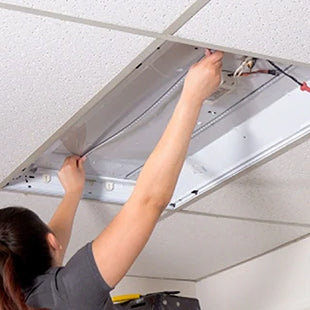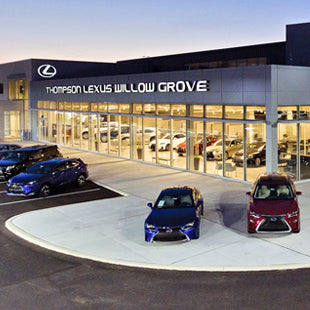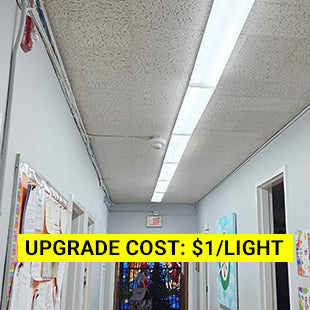Comparing Traditional High Bay Lights with UFO LED Variants: Efficiency, Cost, and Longevity
High bay lighting plays an integral role in illuminating large indoor spaces such as warehouses, manufacturing units, and gymnasiums. As with many technologies, lighting has evolved, bringing forth innovative options like UFO LED high bay lights. But how do these modern luminaires stack up against traditional high bay lights in terms of efficiency, cost, and longevity? Let's delve into the comparison.
Effectiveness
Traditional High Bay Lights: These typically utilize metal halide, high-pressure sodium, or fluorescent bulbs. While they can provide substantial brightness, they often disperse light unevenly, leading to darker spots and shadows in some areas. Moreover, they take time to warm up and reach their full brightness.
UFO LED Variants: LED technology ensures consistent, bright, and even lighting throughout the space. There's no warm-up time; UFO LEDs illuminate instantly at maximum capacity. Additionally, they convert over 90% of the energy into light, reducing wastage and ensuring better luminous efficacy.
Efficiency
Traditional High Bay Lights: Metal halide and fluorescent lamps put out a lot of light, but not as efficiently as LED technology, and metal halide lighting becomes less efficient when run at less than full operating power (dimmed). Both of these light sources are also what's called "omnidirectional," meaning that they put out light on all sides of the bulb. Much of this light is doesn't reach where it's actually needed, unless it's reflected and redirected. This further reduces the efficiency of these lamps. Some high pressure sodium lights can be very efficient, but they have such poor color rendering that they're not ideal for most high bay lighting applications.
UFO LED Variants: LED technology converts as much as 80% of the energy consumed into light, reducing wastage and ensuring better luminous efficacy. It's also a directional lighting technology, which means all of the light can be directed to where it's needed, with none of it lost into the fixture or elsewhere.
Cost
Traditional High Bay Lights: Initial installation costs might be lower, but the long-term expenses rack up. This is due to higher energy consumption and frequent maintenance requirements, including bulb replacements. Since these are high-ceiling lights, bulb replacements can require the expense of special ladders or scaffolding.
UFO LED Variants: While UFO LED lights might have a higher upfront cost, they create substantial savings in the long run. Their energy efficiency translates to lower electricity bills, and their longer lifespan means minimal maintenance and replacement costs.
Longevity
Traditional High Bay Lights: These lights have a shorter lifespan, averaging around 20,000 hours. Frequent switching on and off can further reduce their operational life.
UFO LED Variants: A distinct advantage of UFO LED lights is their longevity. These lights can last up to 50,000 hours or more. Their solid-state construction means fewer fragile parts, leading to a reduced risk of damage and a longer operational life.
In Conclusion
While traditional high bay lights served industries well for years, the UFO LED variants offer undeniable advantages in terms of efficiency, cost savings, and longevity. Making the switch to UFO LED high bay lights is not just a step towards modernization but also a move towards sustainability, cost-effectiveness, and better lighting quality.
If you're ready for UFO LED high bay lights, but you're unsure of what output and how many you'll need to achieve optimal lighting at your facility, ELEDLights can provide you with a professional layout and guidance at no extra charge. Request your free custom high bay lighting layout today.





